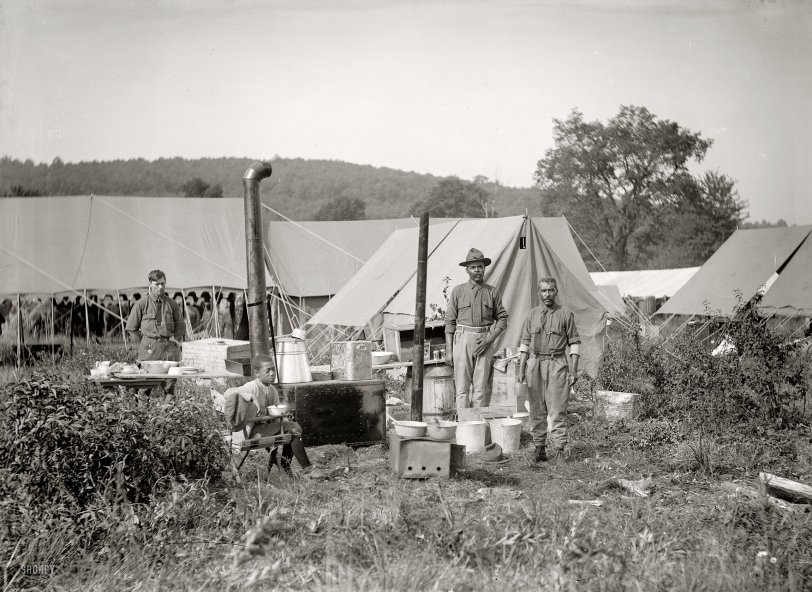


Framed or unframed, desk size to sofa size, printed by us in Arizona and Alabama since 2007. Explore now.
Shorpy is funded by you. Patreon contributors get an ad-free experience.
Learn more.

- Texas Flyer wanted
- Just a Year Too Soon
- WWII -- Replacing men with women at the railroad crossing.
- Yes, Icing
- You kids drive me nuts!
- NOT An Easy Job
- I wonder
- Just add window boxes
- Icing Platform?
- Indiana Harbor Belt abides
- Freezing haze
- Corrections (for those who care)
- C&NW at Nelson
- Fallen Flags
- A dangerous job made worse
- Water Stop
- Passenger trains have right of way over freights?
- Coal
- Never ceases to amaze me.
- Still chuggin' (in model form)
- Great shot
- Westerly Breeze
- For the men, a trapeze
- Tickled
- Sense of loneliness ...
- 2 cents
- Charm City
- What an Outrage
- Brighton Park
- Catenary Supports
Print Emporium
Come and Get It: 1918

"U.S. Army camp kitchen." Somewhere in the general vicinity of Washington, D.C., circa 1918. National Photo Company glass negative. View full size.
Doughboys With Dull Knives
I wonder if this was a Quartermaster's test kitchen. There seems to have been some complaints about Army food.
Excerpted from Bulletin No. 21, issued by the General Headquarters, American Expeditionary Forces on April 29, 1918:
Bread is now being baked in ten-pound loaves for shipment to all troops supplied from our bakeries through the Regulating Stations. Similar loaves are being successfully baked by all field bakeries in the United States as a matter of economy and to increase the capacity of each oven in the field.
Complaints have been made that this bread, upon being cut, crumbles and falls to pieces. This is frequently due to bad handling in the organizations. Often dull knives are used, and the knives are pressed down and forced through the bread without a sawing motion, and such action naturally breaks the bread or mashes it. Sharp knives and a sawing motion only should be used.
It is easy to find fault with bread and not recognize the faults due to bad handling, and it is a well-known fact that bread is a delicate substance at best and is often abused.
This new loaf, being about 12 inches wide and about 24 inches long, should be cut in half, through the long dimension, so as to leave the halves about 24 inches long and about 6 inches wide, and of the same thickness which the loaf had when baked. After the loaf is thus divided it should be turned up on edge, with the edge made by the first cutting operation flat on the table. Then slice by using the sawing motion, cutting the slices from the top edge, through the loaf, to the table.
Care in cutting, if the cutting is done as directed, will prevent any material waste.
My grandfather, a WWI veteran, always recited this verse when he was served peas:
"I eat my peas with honey; I've done it all my life. It makes the peas taste funny, but it keeps them on my knife."
























On Shorpy:
Today’s Top 5